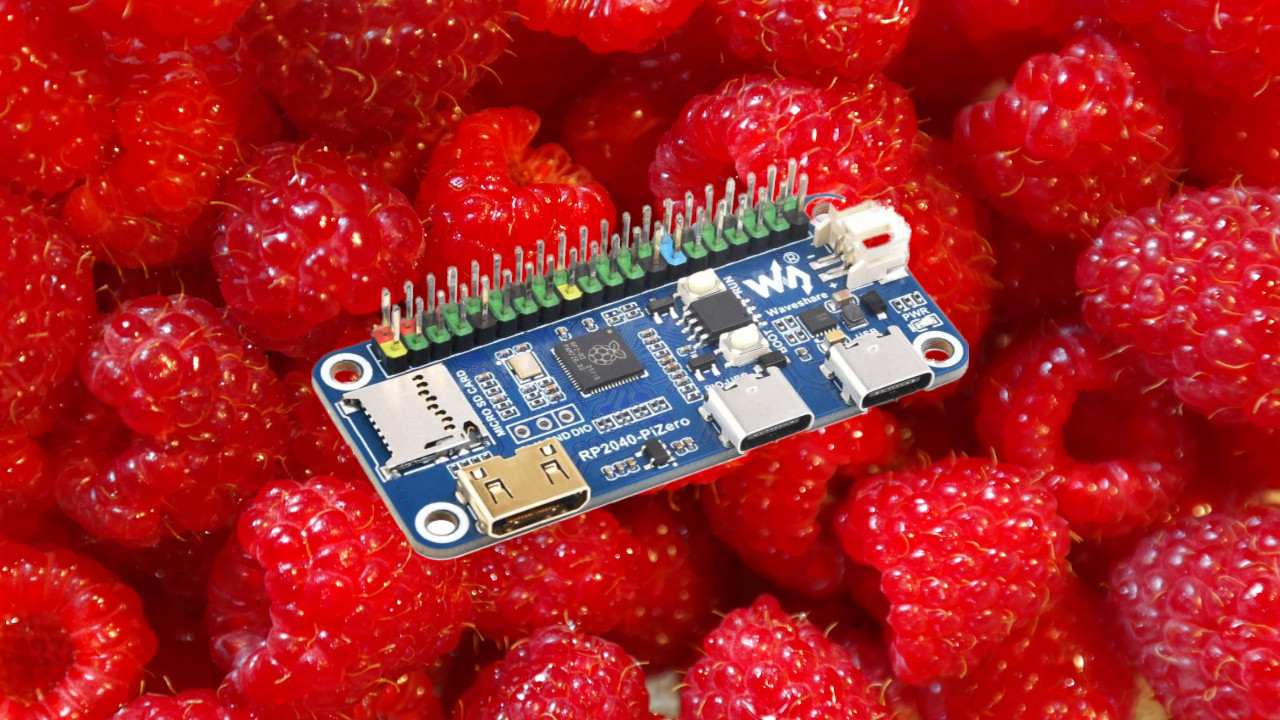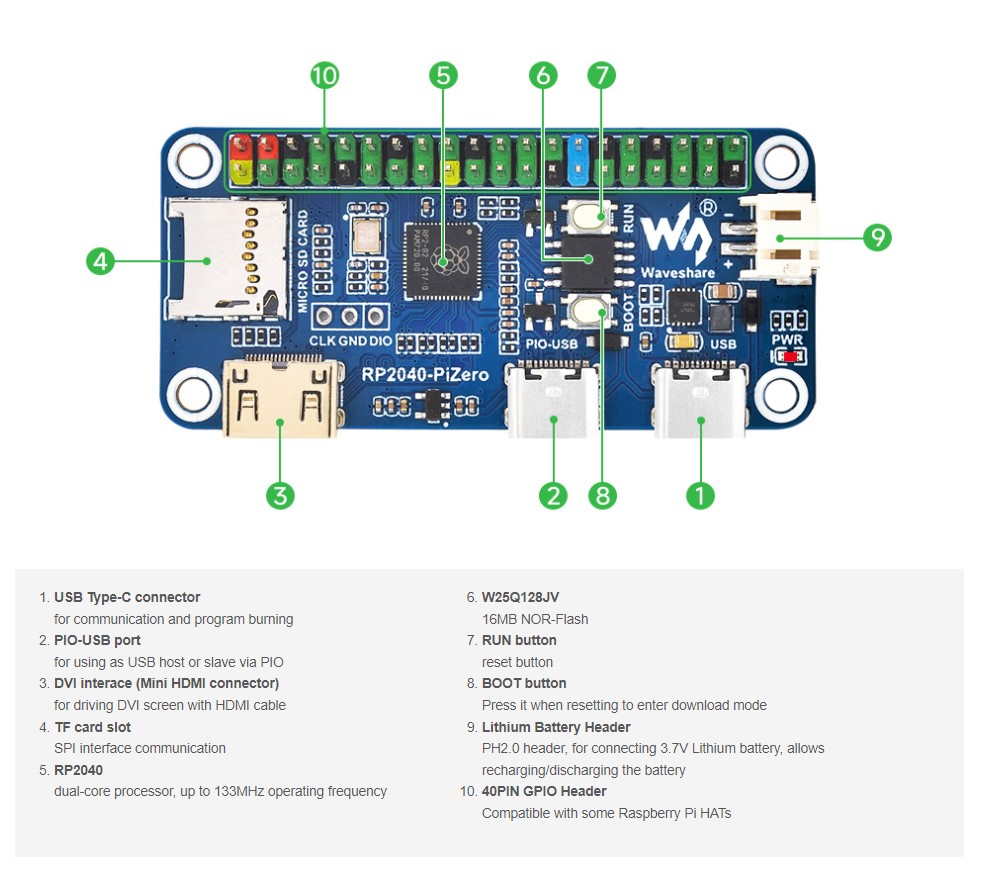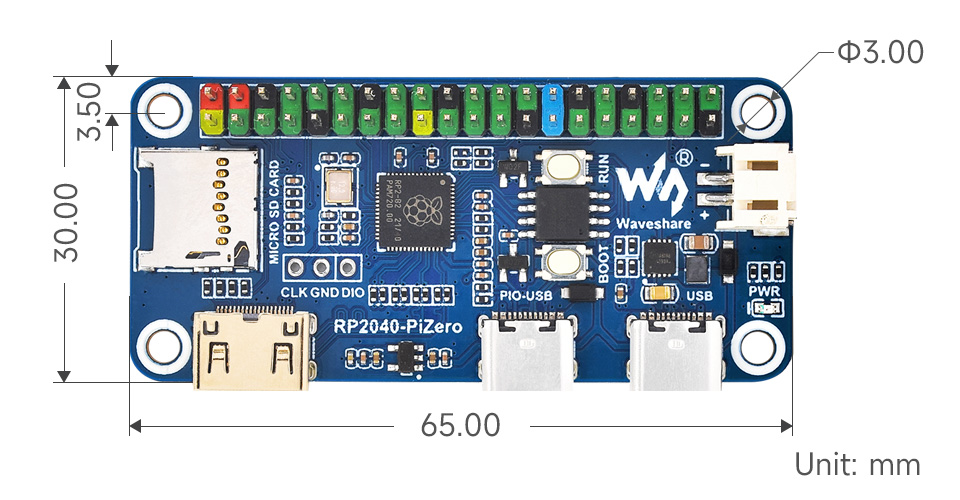Waveshare's RP2040 Pi Zero Morphs Raspberry Pi Pico Into Zero

The Raspberry Pi Zero form factor is highly desirable. The mix of small form factor and high power via the Raspberry Pi Zero 2 W makes it a potent board for robotics and machine learning. For $10, Waveshare's RP2040 PiZero development board marries the Zero form factor with the RP2040 of the Raspberry Pi Pico while also offering an interesting series of connections.
The RP2040 PiZero development board matches the Zero form factor (65 x 30mm), but at its heart is an RP2040 SoC. We get the same dual-core Arm Cortex M0+ CPU running at 133 MHz and 264KB of SRAM. But we get much more flash storage, 16MB versus the 2MB of a Raspberry Pi Pico. If you need more, the onboard micro SD slot provides all you should require. What is missing from the board is Wi-Fi and Bluetooth connectivity. Sure, we can't have everything, but the Raspberry Pi Pico W is a seriously cost-effective device for IoT projects.


A mini HDMI port provides a DVI interface for use with projects written in C, but MicroPython, CircuitPython users will feel a little left out. With this interface, you could easily make video / retro games, but we'd hold out for Pimoroni's Pico Vision, which comes with double the RP2040s and even more RAM!
There are two USB C ports. One is used for power and data connectivity; the other is user-configurable via PIO USB. The cost of using PIO USB is that it can also only be achieved in C and not at the same time as DVI.
An onboard battery charging circuit means lithium batteries can be charged and used via the two-pin header. This is quite neat as it effectively gives the board its own UPS, which is very useful for remote or data collection projects.
The GPIO appears to ape the HAT standard introduced with the Raspberry Pi B+ back in 2014. This isn't the first time that a board has used the HAT pinout. The first we came across was Red Robotics Pico 2 Pi, which essentially routed the Pico's pins to the HAT pinout. SB Components' StackyPi also gave it a shot, with some compatibility issues. The problem with altering the GPIO pinout is that many of the best HATs and addons require specific software libraries to work.
Software compatibility is pretty much standard. If it can run on a Raspberry Pi Pico / RP2040, it will run on Waveshare's RP2040 PiZero development board. Pcio C/C++, MicroPython, and Arduino are officially supported. But remember that DVI and PIO USB are only for C/C++ projects. Perhaps someone will port these libraries to the Arduino IDE?
Get Tom's Hardware's best news and in-depth reviews, straight to your inbox.
More details can be found on the product page of the Waveshare website.

Les Pounder is an associate editor at Tom's Hardware. He is a creative technologist and for seven years has created projects to educate and inspire minds both young and old. He has worked with the Raspberry Pi Foundation to write and deliver their teacher training program "Picademy".